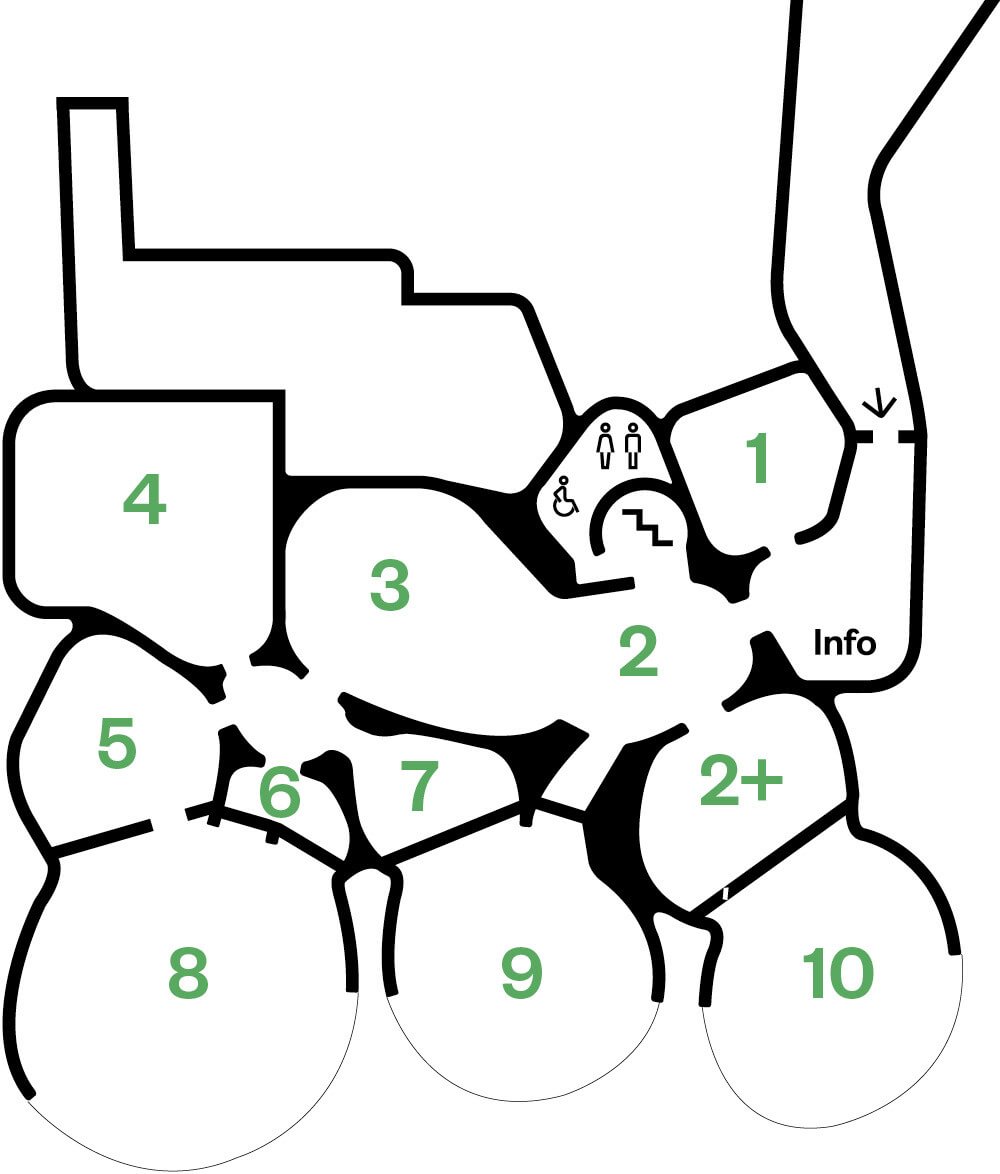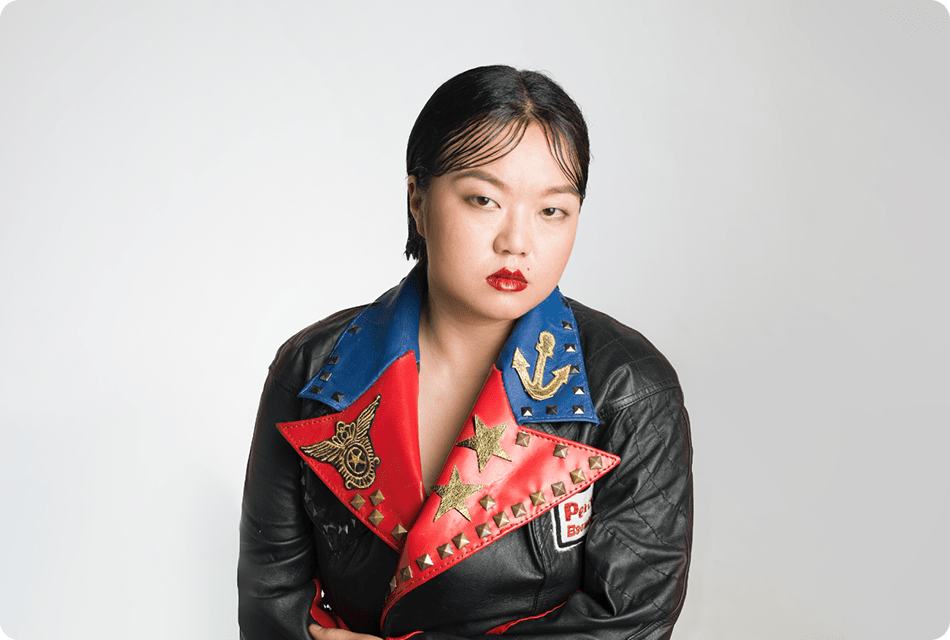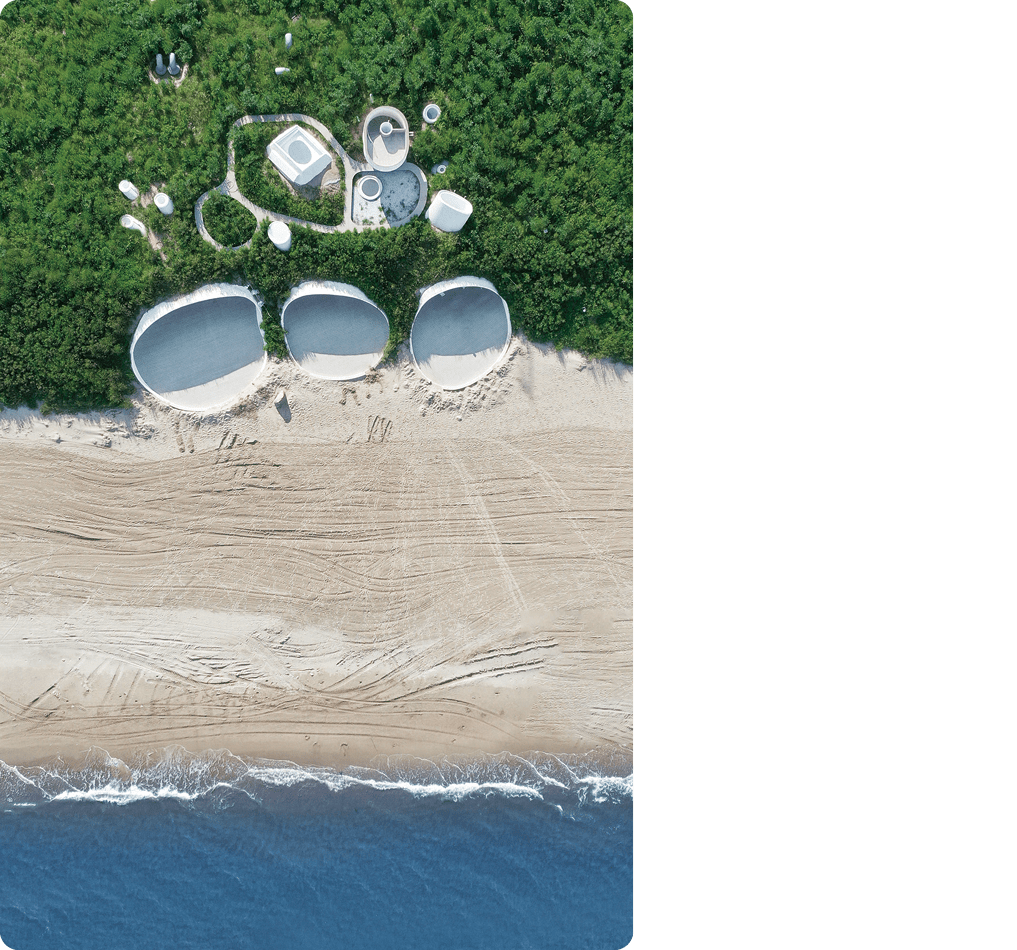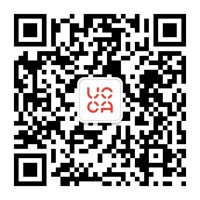UCCA Beijing Open Today, 10:00-19:00 (Final entry: 18:30)
UCCA Dune Open Today, 9:30-18:00 (Final entry: 17:30)
UCCA Clay Open Today, 9:00-18:00 (Final entry: 17:30)
Hu Yinping: You Can Start Anytime
Exhibition Guide
Preface
“You Can Start Anytime” invites visitors to enter into an alternate temporality as magical, subversive and unexpected as the novel creative encounters that formed it. On the occasion of this solo exhibition at UCCA Dune, Hu Yinping (b. 1983, Sichuan province) reimagines her relationship and collaborative strategy within the longstanding “Hu Xiaofang” project in order to foreground art’s potential to affect change through a model where creative labor is not merely acknowledged, but imagination is also shared.
“Hu Xiaofang” first emerged in 2015, initially as a way for Hu Yinping to value and collect her mother’s time and handiwork. Through the platform of the “Hu Xiaofang” company, Hu Yinping discreetly provides a form of economic support for women’s creative labor. Centering knitting and crocheting as its primary creative media, the project is managed by Hu and a team of dedicated facilitators. Often working from prompts, Hu establishes the conditions for participation, but places importance on the individual autonomy of each knitter. The process of creativity itself—the experience of making, the realization of one’s artistic voice, and the ensuing sense of self-worth—is fundamental to the project’s meaning. “Hu Xiaofang” defies stable definitions as a conceptual project and a cooperative structure, operating in an entangled space of economic redistribution and collective authorship.
“You Can Start Anytime” represents a shift in the direction of the “Hu Xiaofang” community, exploring broader questions of aesthetics at the core of Hu Yinping’s own artistic curiosity. Hu has a number of other projects and personae, including her initiative with the Guangdong farmer Sister Ling—presented in the outdoor galleries—and her work as “Qiao Xiaohuan,” a fictional sculptor with traditional fine art education. Qiao and her sculptures explicitly aim to “reflect mainstream trends and fit with market demand,” exploring understandings of artistic production and prevailing aesthetic trends. The proceeds from the sale of these works subsidize Hu’s other projects. In this exhibition, however, her different artistic identities are no longer distinguished, though a core direction remains: unifying forms of creative practice, and bringing art closer to the society it reflects. With sculptural and conceptual direction initiated by Hu and the final design of the artworks proposed by “Hu Xiaofang” participants, the final installations emerge as truly collectively created works. Each participant in this exhibition is part of the Xiaofang collective, incorporating their imagination and time to create complex, creative forms that transcend established social (and artistic) roles.
Organized as a series of immersive environments, these textile, visual and olfactory installations articulate a speculative future where labor, memory, and organic life are redefined by emergent, disruptive social structures and processes of collaboration. Visitors encounter spaces and themes that revisit contemporary systems through the lens of an undefined future—blurring the boundaries between art and daily life in an inspiring, speculative vision. And, as the title suggests, transformation does not require permission—creation is open to all. You can start anytime.
“Hu Yinping: You Can Start Anytime” features works newly commissioned by UCCA, along with a small selection of pieces from previous stages of “Hu Xiaofang.” Each work brings together the time and effort of hundreds of craftswomen. This exhibition is curated by UCCA Curator Holly Roussell. Exclusive wall solutions support is provided by Dulux. UCCA thanks the members of UCCA Foundation Council, International Circle, and Young Associates, as well as Lead Partner Aranya, Lead Art Book Partner DIOR, Lead Imaging Partner vivo, Presenting Partner Bloomberg, and Supporting Partners AIA, Barco, Dulux, Genelc, SKP Beijing, and Stey.
Floor Plan

1
生命力场
Hall of Vital Forces
This installation, which opens the show and sets its tone, presents a vision of a future in which plant life transcends established biological frameworks, opening up new modes of energy, sustenance, and survival. Situated in an ultraviolet-lit environment, different species of “Mother Mushroom” pulsate, suggesting an almost sentient presence. Some grow out confidently from a central pillar, while others are suspended from the cave ceiling—each embedded with hundreds of hand-stitched LED sensor lights
To make the works in this room, all individuals of the Hu Xiaofang collective, including Hu Yinping herself, engaged time and imagination to collectively create these vibrant, complex plant forms, transcending their established roles. First, Hu designed structures using 3D modelling, creating sculptures closely related to her work under the pseudonym “Qiao Xiaohuan.” She then invited the Hu Xiaofang collective to create knit skins of the most toxic plants they could imagine, emphasizing that they should “look poisonous”—assuring their colors would transcend nature. Together, these elements embody a new form and aesthetic, colorful and disruptive, born out of necessity to reassess and survive.
2
未来植域
Hall of Future Flora
Potatoes fall from the sky, wheat grows near water, and cauliflower walks around in this playful imagining of future flora. For this installation, Hu Yinping invited the Hu Xiaofang collective to knit depictions of various common crops, which they themselves have experience growing. However, the artist transforms these horticultural scenarios in a whimsical and dislocated manner. The works are on one hand a humorous response to contemporaneous alienation from the realities of land and agricultural production, and on another, an invitation to contemplate of the rushed temporality of human existence in contrast with the quiet and continuous evolution of nature.
2+
你可以随时开始
You Can Start Anytime
This gallery, which serves as a multipurpose space for knitting workshops throughout the exhibition, gathers a selection of objects created in each stage of “Hu Xiaofang,” along with a video sharing more details about the project and its continued evolution as an open-ended, participatory work.
“Hu Xiaofang” is at once an art project and evolving creative brand, engaging women in Hu Yinping’s hometown in Sichuan through the production of woolen textiles. Since 2015, Hu—under the corporate identity of “Hu Xiaofang”—has placed bulk orders for their knitted goods, subtly shifting the town’s economic and social fabric. What began with purchasing her mother’s beanie hats has since expanded into a series of participatory works, each responding to lived experiences and broader social conditions.
Prior to this exhibition at UCCA, “Hu Xiaofang” has evolved across five key stages. Xiaofang (2015-present), Snow-White Dove (2017-2019), Sense of Security (2018-present), United Nations (2018-present), and Standard Configuration (2020-present).
3
记忆魂瓶
Hall of Future Memory
This room features seven giant urns, which Hu Yinping refers to as “Soul Bottles,” considering them to be “consciousness collectors.” In her words, “When the physical body no longer matters, people store their spirits and information in data chains and cloud storage systems. Human life is finite, but the future is infinite.” To create these works, Hu shared myths and legends about the seven continents with the knitters, and invited them to express themselves by creating their own interpretations of “paradise.” By giving the power of future consciousness to the Xiaofang community, Hu Yinping explores new claims on futurity and the positioning of artistic aesthetics.
4
生命数据库
Hall of Lived Data
The foundation of computational power is data. The foundation of data is people. Every human life reflects the nuances and particularities of its time. In this room, members of the Hu Xiaofang collective—active creative practitioners in this project— were invited to knit their own “personal résumé” or “life story.” Among the participants were homemakers and women working in the informal economy, who had not previously written or even imagined their own résumés. The result is 116 unique profiles, reflecting a diverse range of geographic origins and life experiences. These knitted documents serve as tangible records of their existence—archival artifacts that preserve personal histories for a speculative future. Designed as a “DNA server room” for the collective, the space immerses visitors in a network of human stories. Here, the power of data is not in algorithms, but in memory, labor, and life itself.
5
放空中枢
Hall of Rest and Record
Databases capture micro-realities from every aspect of life. Each individual trace may seem insignificant on its own, but when linked together and analyzed, these fragments form a comprehensive data portrait—a representation of a person’s existence, shaped by habits, choices, and routines. Metrics permeate every corner of daily life, measuring even the most intimate details, down to each bite of food consumed. In this room, Hu Yinping envisions a space for “Unloading,” where personal data is materialized and transformed into tangible objects. Here, the weavers of the Xiaofang collective have knit together the foods they eat and the nourishment that defines their lives. Through this act, the work reflects on the ways data is collected, stored, and interpreted, questioning how the seemingly mundane details of everyday existence shape our identities over time.
6
监视之眼
Panopticon Hall
Cameras, facial recognition software, smartphones, social networks, credit scores, psychological assessments—each silently collects, processes, and analyzes fragments of our lives. These systems promise security, convenience, and even self-discovery, yet their presence is omnipresent, their gaze unrelenting. They know everything about you.
For this small nook by the museum’s windows, the Hu Xiaofang collective has knitted a pair of eyes, transforming the space into both an observatory and a site of surveillance. Visitors are invited to touch the installation, activating delicate, sensitive threads that produce animal sounds, blurring the boundary between observer and observed, presence and perception.
7
闻起来很像
Hall of Familiar Smells
What if, in the future, memory is no longer stored in text or images, but in the ephemeral language of fragrance? Here, scent is not just a sensory experience but a collective archive—one that records traces of past eras and emotions. Drawing on her own family memories and impressions left behind by different decades, Hu Yinping collaborated with olfactory creator Kaori Oishi, working together to create fragrances distilling the essence of five generations of women, each associated with a distinct time period and place in China. As Hu puts it, “Although the women of my family lived in different times and each carries the flavor of their own era, they also share a certain resilience. Each of these scents is unique yet they have shared origins. It smells… familiar.”
Warning: Strong Scents
Certain galleries include olfactory (scent) elements. If you are sensitive or allergic to fragrances, please be advised and plan your visit accordingly.
8-10
玲姐花园
Sister Ling’s Garden
In the outdoor galleries, UCCA Dune presents a series of photographs from Sister Ling’s Garden. Though differing in form, this piece extrapolates upon themes present in the Hu Xiaofang collective’s work, exploring labor, autonomy, and alternative economies. The project stems from Hu’s long-term collaboration with Sister Ling, a farmer in Guangzhou who rejects pesticides, resulting in yields three to five times lower than her neighbors’. The artist has signed a ten-year lease for a plot of Ling’s land, paying a rate equal to two harvests to encourage her to freely cultivate as she pleases. “This arrangement grants Sister Ling a kind of freedom, unburdened the need to make her land productive,” Hu explains. “This freedom sparks envy in the village, envy leads to reflection, and this reflection may inspire change.”
Public Programs
During the exhibition period of “Hu Yinping: You Can Start Anytime”, UCCA will present a thoughtfully-curated series of public programs. On opening day, the exhibition’s curator Holly Roussell, artist Hu Yinping, and olfactory creator Kaori Oishi will lead a guided tour offering an intimate reading of the works on view. Interweaving perspectives from artistic creation, curatorial concept, and sensory experience, the tour will trace how the “Hu Xiaofang” project has evolved from a modest social initiative into a decade-long artistic undertaking. It will also reflect how handcraft functions as a platform for both personal memory and collective narrative.
A key highlight of the programming is a series of hands-on knitting workshops led by contributors to the “Hu Xiaofang” project. Across three sessions—focusing on stitching, crocheting, and collage-making—participants will engage and experience the handcrafting processes central the “Hu Xiaofang” community. Participants will experience the expressive potential of textile as a creative medium and gradually immerse themselves in the narratives of women’s labor embedded in these practices. The workshops aim to guide attendees in using textile art as a means of self-expression and personal creation.
Additionally, UCCA Curator Holly Roussell and artist Hu Yinping will join Wang Weiwei, Curator of Exhibitions and Collections at CHAT (Centre for Heritage, Arts, and Textile) in Hong Kong in a conversation to discuss the conceptual and practical elements of textile art. A particular focus will be on how “Hu Xiaofang” brings women together through textile-making and its contribution to contemporary discourse surrounding social practice and female identity.
| Special Guided Tour | UCCA Dune | 4.27 Sun 12:00-13:00 |
| Knitting Workshop | UCCA Dune Gallery 2+ | 4.27 Sun 14:00-16:30;6.28 Sat 14:00-16:30;8.30 Sat 14:00-16:30 |
| Conversation | Weaving Future Worlds | UCCA Beijing Auditorium | 2025.9.27 Sat 14:00-16:00 |
About Artist

Hu Yinping (b. 1983, Sichuan province; lives and works in Beijing) completed her MFA at the Central Academy of Fine Arts in 2010. Her solo exhibitions include “Hu Yinping: Weaving Realities” (Ming Contemporary Art Museum, Shanghai, 2022); “Snowy White Dove” (Arrow Factory Space, Beijing, 2018); “Tourist” (IAER, Venice, 2017); “Xiaofang” (Arrow Factory Space, Beijing, 2016); and “Thank you” (Space 3, Chengdu, 2016). Her work has been featured in major group exhibitions at galleries and institutions around the world, including “The Story of a Merchant” (kurimanzutto, Mexico City, 2023); “SIGG: Chinese Contemporary Art from the Sigg Collection” (SONGEUN Art Space, Seoul, 2023); “Nián Nián: The Power and Agency of Animal Forms” (Deji Art Museum, Nanjing, 2023); “Incredible Action” (A4 Art Museum, Chengdu, 2022); “Stepping Out!” (Stiftelsen Lillehammer Museum, Norway; Museum der Moderne Salzburg, Austria; Gammel Strand, Copenhagen, 2022); “The Endless Garment” (X
Museum, Beijing, 2021); “Body Vision” (Cloud Art Museum, Shenzhen, 2021); “Curtain” (Para Site, Hong Kong, 2021); “Airport Biennale” (Guangzhou, 2019); “Hangzhou Triennial of Fiber Art” (Zhejiang Art Museum, Hangzhou, 2019); and “Sweet Home” (Power Station of Art, Shanghai, 2017).
About UCCA Dune

UCCA Dune is an art museum buried under a sand dune by the Bohai Sea in Beidaihe, 300 kilometers east of Beijing. Designed by OPEN Architecture, its galleries unfold over a series of cave-like spaces. Some are naturally lit from above, while others open out onto the beach. UCCA Dune presents rotating exhibitions in dialogue with its unique site and space, with a particular focus on emerging Chinese and global talents. Opened in 2018, UCCA Dune is supported by UCCA strategic partner Aranya, the seaside cultural and lifestyle community where it is located.
